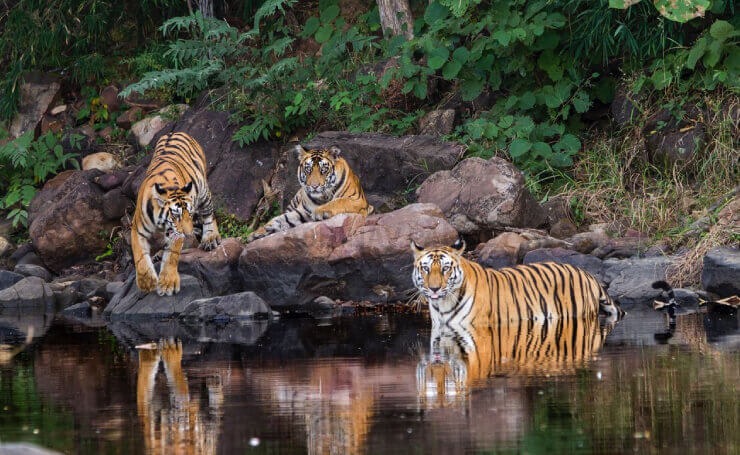India’s top nine national parks—from Jim Corbett to Hemis—offer unmatched wildlife experiences across varied landscapes. Home to tigers, lions, rhinos, elephants, and snow leopards, these parks are ideal for nature lovers and photographers. With growing eco-tourism, they play a vital role in conservation and sustainable travel
India’s rich biodiversity is showcased across its vast network of national parks, each offering a unique window into the country’s ecological heritage. From the Himalayan foothills to the mangrove swamps of the east, these nine parks are must-visits for wildlife lovers seeking thrilling encounters and serene landscapes.
Key Highlights From The Wild
- Jim Corbett National Park, Uttarakhand: India’s first national park, renowned for Bengal tigers, leopards, elephants, and birdlife amid dense forests and riverine terrain
- Kaziranga National Park, Assam: A UNESCO World Heritage Site, home to the world’s largest population of one-horned rhinoceroses, along with swamp deer and migratory birds
- Ranthambore National Park, Rajasthan: Famous for tiger sightings and historic forts, offering open forest safaris and rich cultural backdrops
- Sundarbans National Park, West Bengal: The world’s largest mangrove forest, known for elusive Royal Bengal tigers and saltwater crocodiles
- Gir National Park, Gujarat: The only habitat of the Asiatic lion, also hosting leopards, hyenas, and antelopes
- Bandipur National Park, Karnataka: A part of the Nilgiri Biosphere Reserve, known for elephants, gaurs, and rich flora
- Kanha National Park, Madhya Pradesh: Inspiration for Rudyard Kipling’s Jungle Book, featuring barasingha, tigers, and dense sal forests
- Periyar National Park, Kerala: Centered around a scenic lake, offering boat safaris to spot elephants, wild boars, and sambar deer
- Hemis National Park, Ladakh: India’s highest altitude park, home to snow leopards, Tibetan wolves, and Himalayan blue sheep
Travel Context
- These parks span diverse ecosystems—from tropical forests and grasslands to alpine terrain—making them ideal for year-round exploration
- Most offer guided safaris, eco-lodges, and conservation education programs for visitors
- Wildlife tourism in India contributes significantly to local economies and conservation efforts, with growing emphasis on sustainable travel
Outlook
- With increasing interest in nature-based experiences, these parks are expected to see a rise in domestic and international footfall
- Conservation authorities are enhancing infrastructure and digital booking systems to improve accessibility and visitor safety
- Wildlife lovers are encouraged to plan visits during early mornings or winter months for optimal sightings
Sources: Economic Times, Whatshot India, Sharp Holidays




